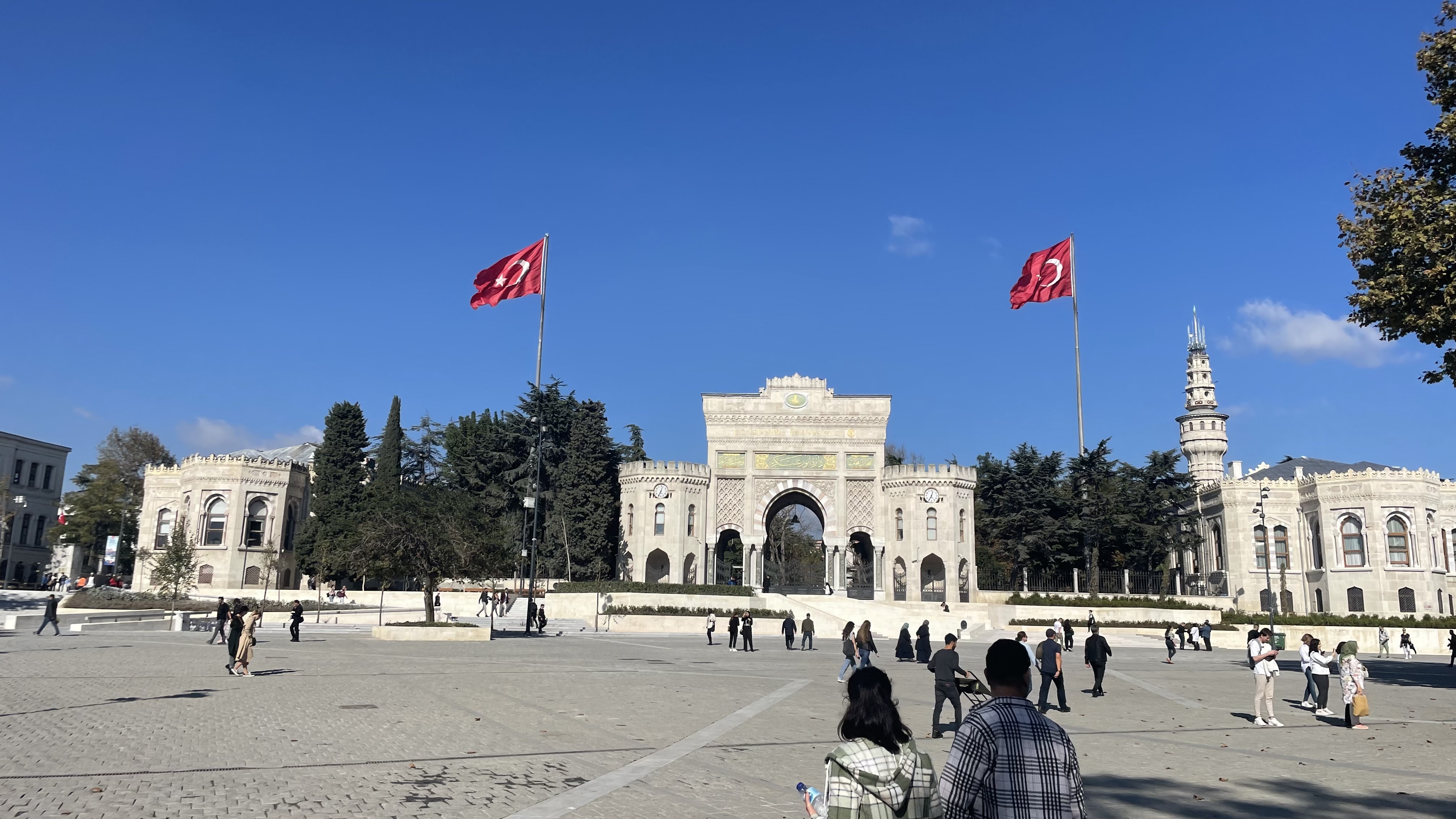|
Arslan Hane, Istanbul
Arslan Hane (Turkish for ''Lion's shelter''; also ''Arslanhane'') was a Byzantine Eastern Orthodox church converted into a profane building by the Ottomans in Istanbul, Turkey. The Church was dedicated to Christ of the Chalke ( el, Χριστὸς τῆς Χαλκῆς), Janin (1953), p. 544. after the image of the Savior ("Christ Chalkites") framed above the main entrance of the nearby Chalke Gate. This building, whose name stems possibly from its doors or tiles made with bronze (in Greek ''chálkeos''), was the monumental vestibule of the Great Palace of Constantinople. The desecrated church, already heavily damaged by fire, was demolished in 1804.Müller-Wiener (1976), p. 81 Location The structure was located in Istanbul, in the district of Fatih, in the neighborhood of ''Sultanahmet'', about south of the Hagia Sophia, not far from the Column of Justinian and to the left of the Chalke Gate of the Great Palace, both disappeared. History Byzantine Age In the tenth century, Emp ... [...More Info...] [...Related Items...] OR: [Wikipedia] [Google] [Baidu] |
Byzantine Constantinople-en
The Byzantine Empire, also referred to as the Eastern Roman Empire or Byzantium, was the continuation of the Roman Empire primarily in its eastern provinces during Late Antiquity and the Middle Ages, when its capital city was Constantinople. It survived the fragmentation and fall of the Western Roman Empire in the 5th century AD and continued to exist for an additional thousand years until the fall of Constantinople to the Ottoman Empire in 1453. During most of its existence, the empire remained the most powerful economic, cultural, and military force in Europe. The terms "Byzantine Empire" and "Eastern Roman Empire" were coined after the end of the realm; its citizens continued to refer to their empire as the Roman Empire, and to themselves as Romans—a term which Greeks continued to use for themselves into Ottoman times. Although the Roman state continued and its traditions were maintained, modern historians prefer to differentiate the Byzantine Empire from Ancient Rome ... [...More Info...] [...Related Items...] OR: [Wikipedia] [Google] [Baidu] |
Kievan Rus'
Kievan Rusʹ, also known as Kyivan Rusʹ ( orv, , Rusĭ, or , , ; Old Norse: ''Garðaríki''), was a state in Eastern and Northern Europe from the late 9th to the mid-13th century.John Channon & Robert Hudson, ''Penguin Historical Atlas of Russia'' (Penguin, 1995), p.14–16.Kievan Rus Encyclopædia Britannica Online. Encompassing a variety of polities and peoples, including East Slavic, Norse, and Finnic, it was ruled by the , fou ... [...More Info...] [...Related Items...] OR: [Wikipedia] [Google] [Baidu] |
Thessaloniki
Thessaloniki (; el, Θεσσαλονίκη, , also known as Thessalonica (), Saloniki, or Salonica (), is the second-largest city in Greece, with over one million inhabitants in its Thessaloniki metropolitan area, metropolitan area, and the capital city, capital of the geographic regions of Greece, geographic region of Macedonia (Greece), Macedonia, the administrative regions of Greece, administrative region of Central Macedonia and the Decentralized Administration of Macedonia and Thrace. It is also known in Greek language, Greek as (), literally "the co-capital", a reference to its historical status as the () or "co-reigning" city of the Byzantine Empire alongside Constantinople. Thessaloniki is located on the Thermaic Gulf, at the northwest corner of the Aegean Sea. It is bounded on the west by the delta of the Vardar, Axios. The Thessaloniki (municipality), municipality of Thessaloniki, the historical center, had a population of 317,778 in 2021, while the Thessaloniki metro ... [...More Info...] [...Related Items...] OR: [Wikipedia] [Google] [Baidu] |
Istanbul University
, image = Istanbul_University_logo.svg , image_size = 200px , latin_name = Universitas Istanbulensis , motto = tr, Tarihten Geleceğe Bilim Köprüsü , mottoeng = Science Bridge from Past to the Future , established = 1453 1846 1933 , type = Public university Research university , rector = Prof. Dr. Mahmut Ak , students = 69,411 , undergrad = 51,714 , postgrad = 16,669 , academic_staff = 4,101 , city = Istanbul , country = Turkey , campus = Beyazıt CampusVezneciler CampusAvcılar CampusÇapa CampusKadıköy Campus , coor = , colors = Green Yellow , affiliations = Coimbra Group EUA UNIMED , website = , free_label = Founder , free = Mehmed II Istanbul University ( tr, İstanbul Üniversitesi) is a prominent public research university located in Istanbul, Turkey. Founded by Mehmed II on May 30, 1453, a day after the conquest of Constantinople by the Turks, it was reformed in 1846 as the first Ottoman higher education institution based on Europea ... [...More Info...] [...Related Items...] OR: [Wikipedia] [Google] [Baidu] |


